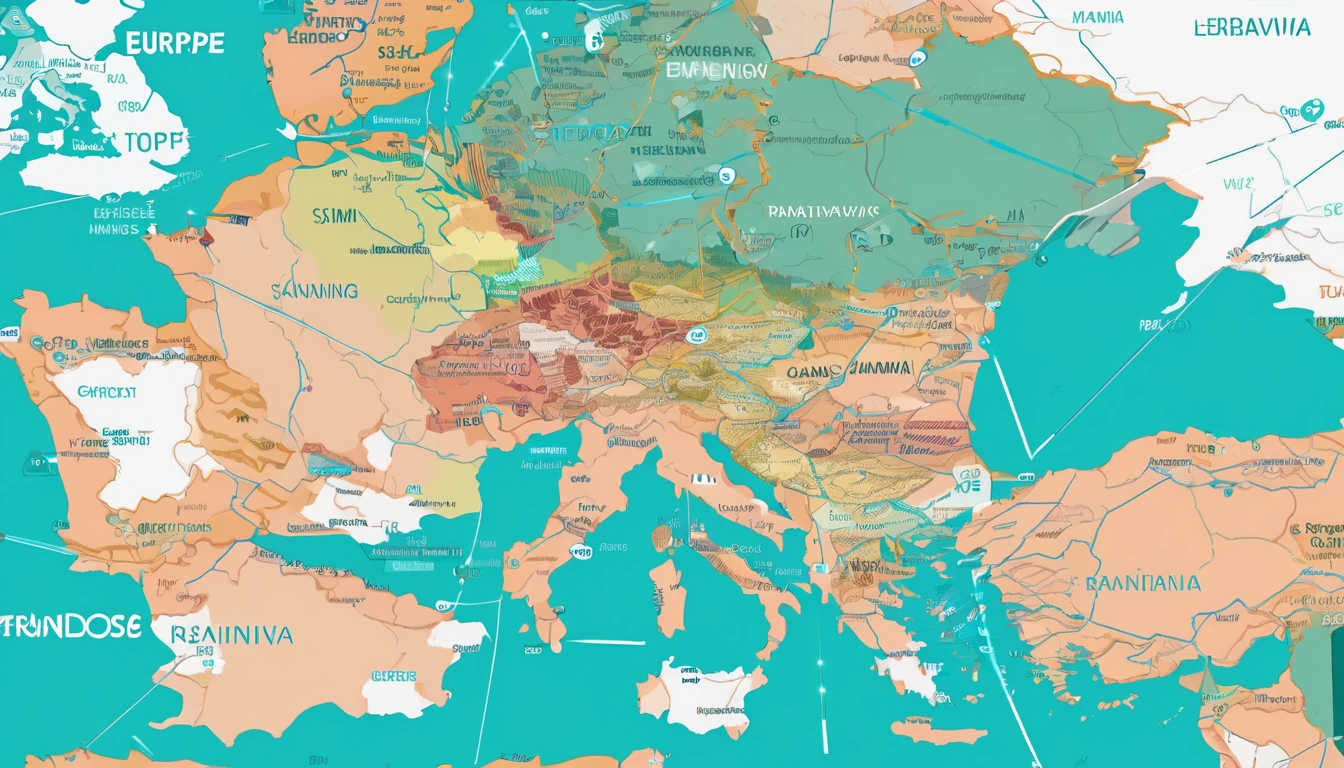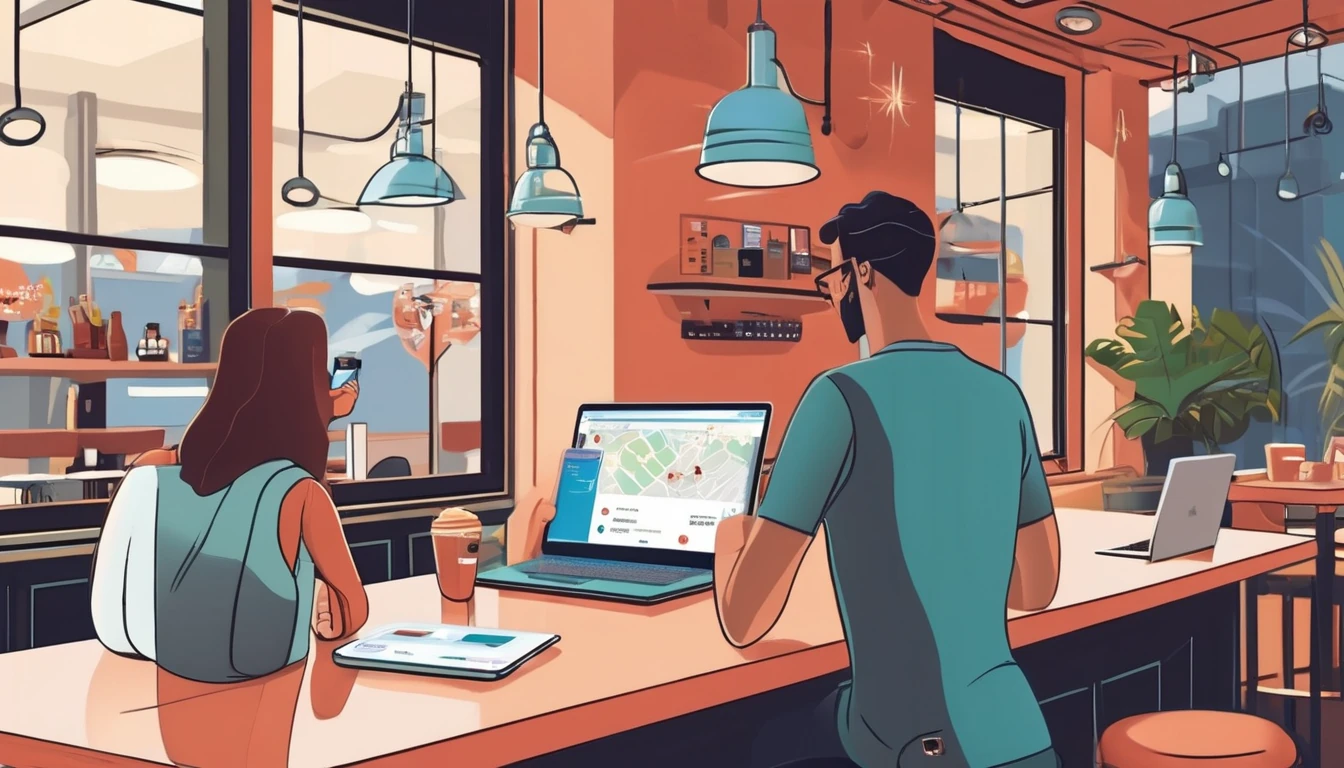Travellers love the promise of “unlimited data”, but networks define “unlimited” differently from how most of us use the word. In practice, unlimited plans almost always come with a Fair‑Use Policy (FUP) and speed management rules. Understanding these is the difference between smooth streaming in a hotel lobby and a surprise crawl when you really need maps, ride‑hailing, or boarding passes.
This guide explains unlimited data throttling fair use in plain English. You’ll learn how throttling differs from deprioritisation, the typical caps you’ll see at home and while roaming, how to spot what’s happening on your line, and practical ways to avoid slowdowns on the road. We’ll also flag common gotchas—like hotspot limits and video shaping—that often hide in the small print. Planning a trip? We’ll show you how to pick a plan or travel eSIM with the right fair‑use terms for your usage, whether you’re heading to the US, Spain, Italy or across Western Europe.
What “Unlimited” Really Means Today
“Unlimited” almost never equals “full speed, all the time, for everything.” Most unlimited plans give you:
- A bucket of high‑priority or full‑speed data (often called premium data)
- A separate, often smaller allowance for hotspot/tethering
- A Fair‑Use Policy that applies especially when roaming
Once you hit a threshold—monthly, weekly, or even daily—your speeds may be managed in two distinct ways:
- Throttling: your line is capped to a fixed, low speed (for example 128 kbps, 512 kbps, or 1–3 Mbps)
- Deprioritisation: your line stays “unlimited”, but drops in priority behind others when cells are busy
Carriers use both to keep networks stable. For travellers, the impact varies enormously by location and time of day. Understanding unlimited data throttling fair use before you buy prevents surprises once you land.
Fair‑Use Policies (FUP) in practice
FUPs are there to stop unusual consumption that affects other users. Typical patterns we see:
- Domestic unlimited: 30–100 GB of “premium” data before deprioritisation may kick in
- Roaming FUP: 5–30 GB at full speed in a foreign country, then slower speeds or deprioritisation
- Daily high‑speed passes: 1–5 GB per day, then 1–3 Mbps until midnight
- Hotspot allowances: 5–50 GB at full speed; after that, tethering may be banned or throttled
These are ranges, not promises—always check the plan page. For region‑specific options, browse Destinations or see Esim United States, Esim Spain, Esim France, Esim Italy, Esim Western Europe and Esim North America.
Hotspot and video shaping
Two limits people often miss:
- Hotspot/tethering: Many “unlimited” plans only include a fixed hotspot allowance. After that, tethering may be slowed or blocked.
- Video streaming: Some plans cap video at SD (480p) or HD (720p) using traffic shaping, regardless of your available bandwidth.
If you rely on hotspot for work or need HD/4K video, choose a plan that explicitly includes it.
Throttling vs Deprioritisation: Know the Difference
These terms are not interchangeable. Here’s how to recognise each and why it matters.
- Throttling (speed cap)
- What it is: A hard limit on your maximum speed once you hit a threshold.
- When it triggers: After using your premium allowance, or after hotspot/video caps, or during traffic shaping rules.
- How it feels: Consistently slow across locations and times—e.g., streams drop to SD, large downloads crawl, video calls struggle.
- Typical numbers: 128–512 kbps for heavy throttles; 1–3 Mbps for lighter management.
- Deprioritisation (queue position)
- What it is: Your traffic moves lower in the queue only when the network is congested.
- When it triggers: After a premium data threshold, or at busy cells (stadiums, stations, city centres at peak).
- How it feels: Variable. Slow at busy times/places; normal or fast at quieter cells or off‑peak hours.
- Typical signs: Speed tests vary widely by time and location; uploads may feel especially sluggish in crowds.
Why it matters: If you’re throttled, changing time or place won’t help much. If you’re deprioritised, moving one block, switching to a less loaded band/technology (e.g., 4G to 5G or vice versa), or waiting until off‑peak can restore high speeds.
Typical caps for travellers, by region
These are indicative ranges to help set expectations. Always review plan specifics on the product page.
- United States / North America
- Premium data on “unlimited”: commonly 30–100 GB before deprioritisation
- Hotspot: 5–50 GB at full speed; then slower or disabled
- Post‑FUP throttle: 128–512 kbps on some budget plans; others keep full speed but deprioritise
- See Esim United States and Esim North America for travel‑friendly options.
- Western Europe (EU/UK)
- Domestic unlimited often very generous; EU‑roam FUPs of 5–35 GB are common
- Daily unlimited passes: 1–5 GB/day at full speed then 1–3 Mbps
- Hotspot limits vary; check if tethering is included in the FUP
- See Esim Western Europe, plus country pages like Esim France, Esim Italy and Esim Spain.
- Multi‑country trips
- Regional eSIMs bundle fair‑use per country or per plan. Expect FUPs in the 5–30 GB range for short trips.
- If you’re a power user, consider stacking plans or selecting tiers with higher premium data.
How to spot slowdowns (and prove what’s happening)
Use this quick, repeatable process:
- Check your usage in the app/portal - Look for “premium data used”, “hotspot used”, or “FUP reached” messages.
- Run two speed tests - One at a busy time (e.g., 6–8 pm), one off‑peak (early morning). Note ping, download, and upload. - Deprioritisation usually shows big time‑of‑day swings; throttling stays consistently capped.
- Toggle network modes - Switch 5G to 4G (LTE), or vice versa. Sometimes a less crowded 4G band beats congested 5G.
- Move 100–300 metres - Try a different street corner or side of the building. Cell boundaries and load change quickly.
- Test with and without VPN - A VPN won’t fix volume‑based throttles, but it can neutralise app‑specific shaping. Compare results.
- Try another device or SIM/eSIM if available - If the second line flies, your original line is likely managed; if both are slow, it’s probably coverage or congestion.
Pro tips: - Record screenshots of usage counters and speed tests. It’s useful if you escalate with support. - If tethering is slow but on‑device usage is fine, you’ve likely hit a hotspot cap.
How to avoid or minimise slowdowns
Follow these steps before and during your trip:
- Choose the right plan tier - Prefer plans that advertise “premium data” amounts and explicit hotspot allowances. - For multi‑country trips with heavy usage, consider regional plans like Esim Western Europe or Esim North America with generous FUPs.
- Match the plan to your destination - In the US, capacity varies by city and carrier. Travel‑specific options on Esim United States are tuned for visitors. - In Europe, check country pages—Esim France, Esim Italy, Esim Spain—for local FUP details.
- Keep hotspot usage intentional - Download large files over hotel Wi‑Fi. - If you must tether, reduce video quality and pause cloud backups.
- Optimise your apps - Turn off auto‑updates and background sync while on mobile data. - Pre‑download offline maps and playlists before you fly. - Set streaming apps to 480p/720p on mobile; switch back to higher quality on Wi‑Fi.
- Manage your radios - If 5G is patchy, force 4G/LTE to avoid sticky, congested NSA 5G cells. - If upload is critical (video calls), test at different times or locations to dodge deprioritised uplink.
- Carry a fallback - Add a second eSIM from a different network in your dual‑SIM phone. When one is congested, switch. - For teams, pooled or centrally managed data on For Business helps ensure reliable capacity.
- Read the small print - Look for words like “after X GB, speeds reduced to 1 Mbps,” “video streams at SD,” or “hotspot 10 GB”.
Pro tips: - City centres at lunchtime and early evenings are peak hours. Plan uploads and large downloads for mornings. - Rural areas may have excellent peak speeds but fewer carriers. Keep a secondary eSIM for redundancy.
Heavy‑use and business travellers
If you’re syncing large files, running live demos, or supporting a team:
- Pick plans with stated premium data allowances and business‑grade hotspot limits.
- Use dual connectivity: one line for primary data, another as a hot backup.
- Consider centrally managed solutions via For Business for pooled data and support. Channel or travel partners can explore the Partner Hub.
Checklist: Before you buy an “unlimited” plan
- Is there a premium data allowance before deprioritisation? How many GB?
- What is the throttle speed after the FUP is reached?
- How much hotspot/tethering is included at full speed? What happens after?
- Is video streamed at a fixed resolution on mobile data?
- Are the FUP and hotspot limits different when roaming?
- Can I view real‑time usage counters in an app or portal?
- What networks and bands are supported at my destination?
- Does the plan suit my itinerary? Check regional options on Destinations.
FAQ
Q: What’s the difference between throttling and deprioritisation? A: Throttling is a fixed speed cap imposed after you hit a limit (e.g., 512 kbps). Deprioritisation only lowers your queue position during congestion; speeds can still be fast at quieter times or places.
Q: How many gigabytes can I use before I’m slowed on “unlimited” plans? A: It varies by plan and region. Common thresholds are 30–100 GB of premium data domestically, and 5–30 GB when roaming on travel eSIMs. Some plans throttle after that; others simply deprioritise.
Q: Does a VPN bypass throttling or deprioritisation? A: No for volume‑based throttling and deprioritisation—they apply regardless of encryption. A VPN may help only if the network is shaping specific apps (e.g., video), not if you’ve hit a usage cap.
Q: Why is my data slow even before I hit a cap? A: Likely congestion, weak signal, or sub‑optimal bands. Try another location, switch between 5G and 4G, and test at off‑peak times. Compare results to distinguish network load from policy limits.
Q: Is hotspot included in unlimited plans? A: Often in limited amounts (e.g., 5–50 GB). After the hotspot allowance, tethering may be throttled or blocked. Always check the hotspot line item separately from general data.
Q: Will 5G keep me safe from slowdowns? A: 5G can deliver higher peak speeds, but policy still applies. You can still be deprioritised on a busy 5G cell or throttled after hitting a FUP threshold.
Next step: Plan your trip with the right fair‑use and speed terms by browsing regional options on Destinations.




